Photo
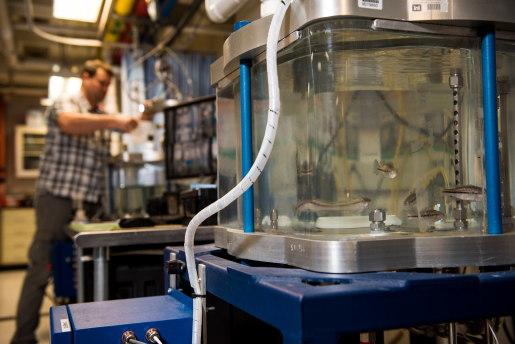
Caption
PNNL staff operate computer-controlled barotrauma chambers to simulate the pressures that fish may experience when passing downstream through hydropower turbines.
Credit
Andrea Starr | Pacific Northwest National Laboratory
Photo
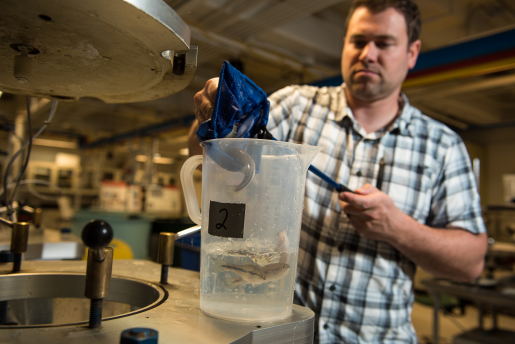
Caption
PNNL staff in the Aquatic Research Laboraory use data from its baraotrauma chambers to minimize the impacts of hydropower on downstream migrating fish.
Credit
Andrea Starr | Pacific Northwest National Laboratory
Photo
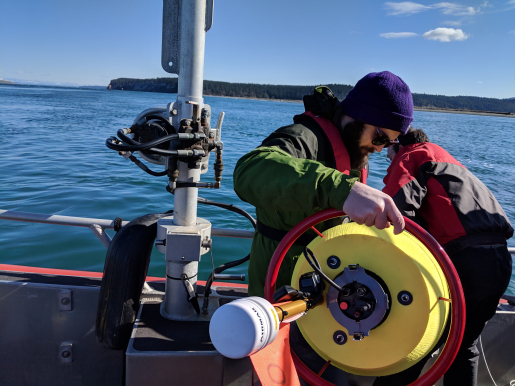
Caption
University of Washington researchers deploy their Drifting Acoustic Instrumentation SYstem (DAISY) technology at the PNNL Marine Sciences Laboratory. DAISY develops easy-to-use, readily available, environmental monitoring instruments capable of recording underwater noise near marine energy devices.
Credit
Garrett Staines | Pacific Northwest National Laboratory
Photo
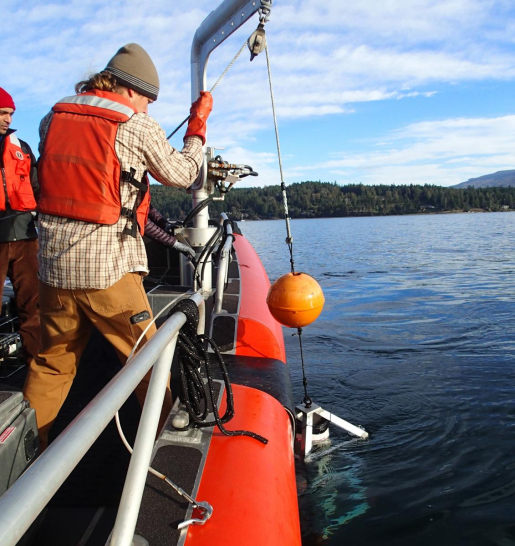
Caption
Researchers deploys Integral Consulting Inc's NoiseSpotter device in the Sequim Bay channel in Washington State. The device has a sensor system that classifies and provides accurate location information about sounds around marine energy installations.
Credit
Pacific Northwest National Laboratory, Marine Sciences Laboratory
Photo
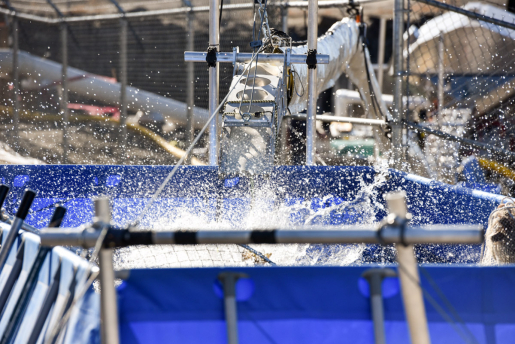
Caption
Small Business Voucher awardee, Whooshh Innovations, designed a fish passage solution using lengths of flexible tube and slight differences in pressure to gently propel fish up and around obstacles in waterways.
Credit
Pacific Northwest National Laboratory
Photo
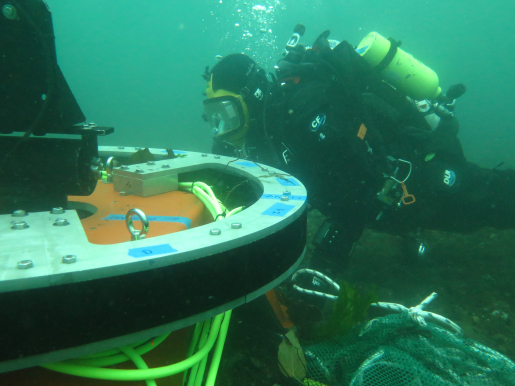
Caption
A diver inspects the Long Range Target Detection and Classification System developed by BioSonics, Inc. after installation at Pacific Northwest National Laboratory Marine Sciences Laboratory underwater testing platform.
Credit
Pacific Northwest National Laboratory
Photo
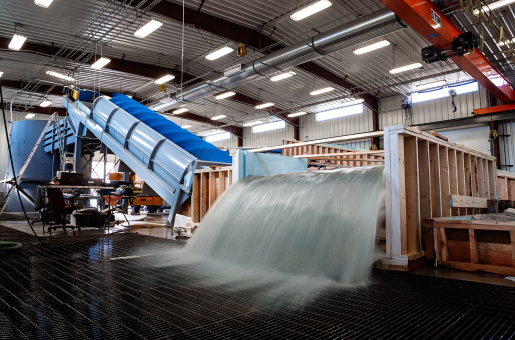
Caption
Utah Water Research Lab engineers test a new type of hydrodynamic turbine developed by Percheron Power that is modeled after Archimedes’ screw.
Credit
Percheron Power
Photo
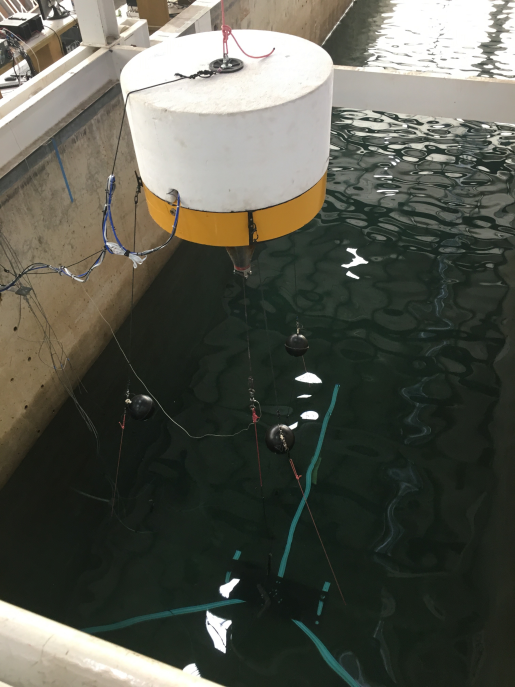
Caption
Wave Energy Prize winner, Aquaharmonics, tests their wave energy converter in a flume at Oregon State University.
Credit
Aquaharmonics
Photo
Caption
Pacific Northwest National Laboratory-developed technology, called Sensorfish, collects data to help make turbines more fish friendly.
Credit
Sarah Wagoner
Photo
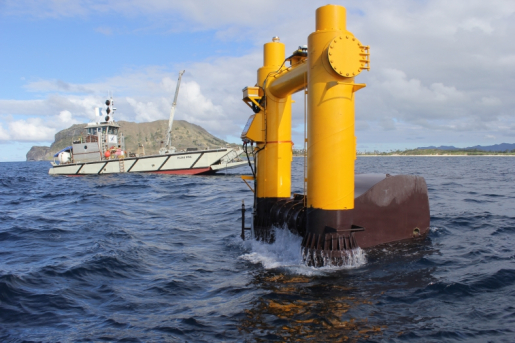
Caption
DOE-supported "Azura" wave energy converter is installed at a U.S. Navy test site in Hawaii.
Credit
Northwest Energy Innovations
Photo
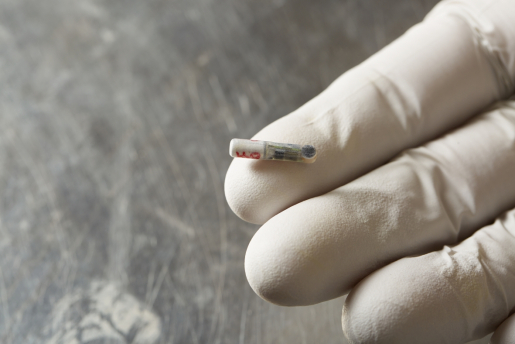
Caption
The length of two grains of rice, Pacfic Northwest National Laboratory's injectable acoustic fish tag is used to monitor the behavior, movement, and habitat use of fish migrating through hydropower dams from freshwater to saltwater.
Credit
Pacific Northwest National Laboratory
Photo
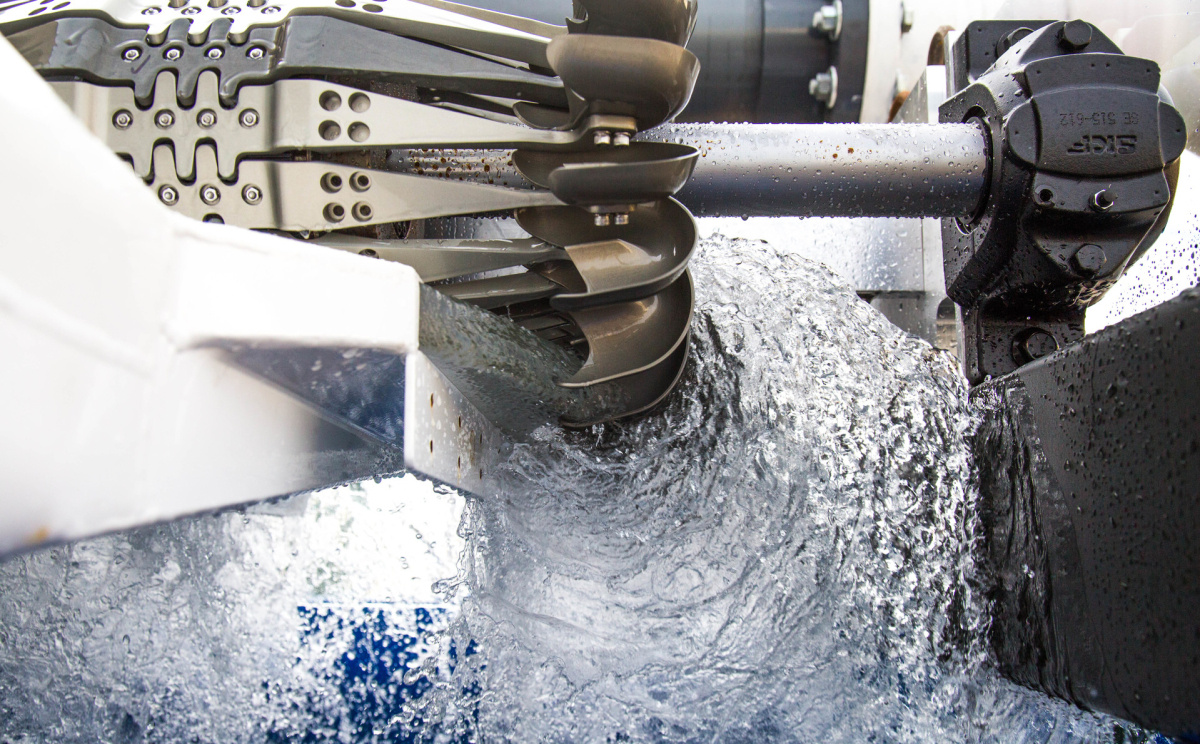
Caption
Natel Energy’s Linear Pelton hydroEngine, a linear free jet single stage impulse turbine, spins at the Natel Energy headquarters in Alameda, California.
Credit
Andy Baumgartner
Photo

Caption
PNNL staff operate computer-controlled barotrauma chambers to simulate the pressures that fish may experience when passing downstream through hydropower turbines.
Credit
Andrea Starr | Pacific Northwest National Laboratory
PNNL staff operate computer-controlled barotrauma chambers to simulate the pressures that fish may experience when passing downstream through hydropower turbines.
Andrea Starr | Pacific Northwest National Laboratory
August 7, 2025

